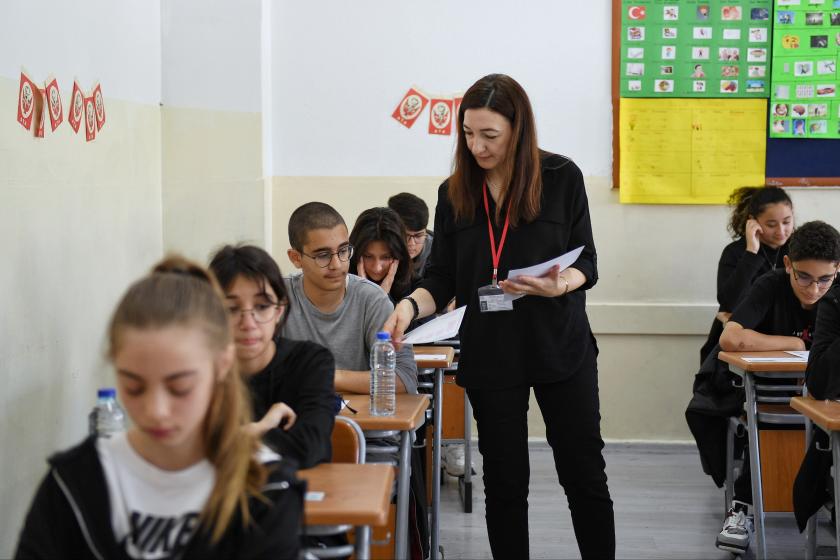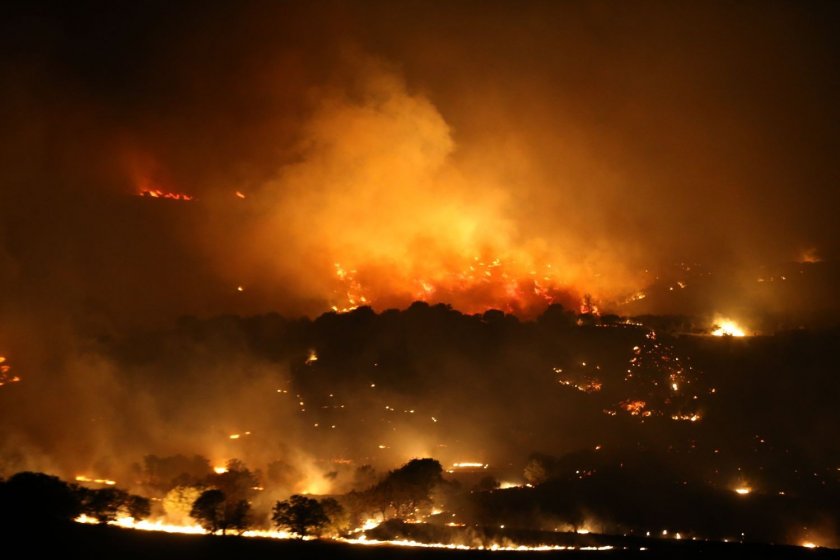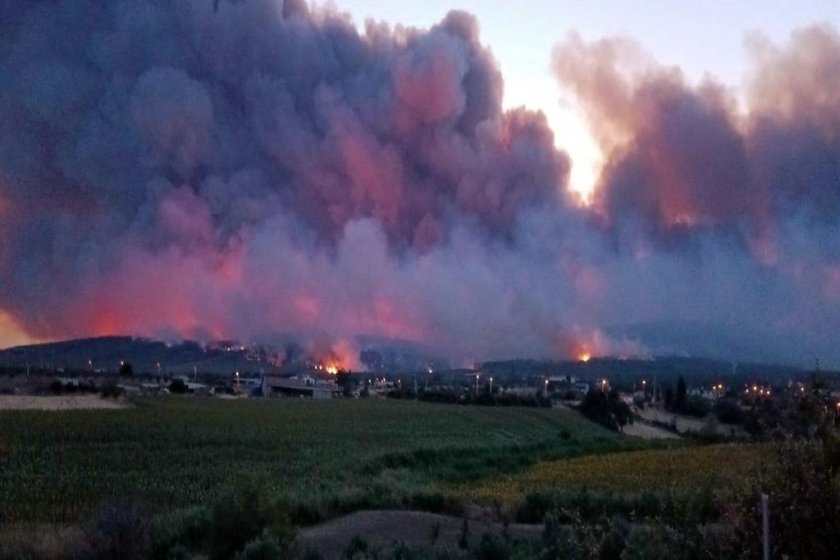Yellow, Red, Green
Media watchdog RTÜK fined TELE1, which published the video of the 25th anniversary of Evrensel newspaper, on the charge of “praising and encouraging terrorism, invigorating or justifying terrorist organisations”.

Evrensel'in 25. yıl videsounda yer alan ve cezaya gerekçe gösterilen görüntü.
The date is April 1, 2017, just before the April 16 constitutional referendum. President Recep Tayyip Erdoğan attends a grand opening ceremony in Diyarbakır with the then Minister of Environment and Urbanisation, Mehmet Özhaseki. They are accompanied by the former Minister of Finance and Treasury Berat Albayrak, the former Deputy Prime Minister Numan Kurtulmuş, and Minister of the Interior and deputy leader of the Justice and Development Party (AKP) Süleyman Soylu. All of them are holding a pair of scissors, ready to cut a ceremonial ribbon.
In front of them are two girls, aged 6-7, dressed in the region’s traditional clothing. One of the girls can barely even reach the ribbon. They both have on a headdress worn by Kurdish women, called kofi, decorated with yellow, red and green colours.
Erdogan calls out to the public: “I said before that we are only accountable to you, the electorate. Through the creation of a president in the new management system, the people will determine the government. Thus, the era of those who want to replace ballot boxes with bullet boxes is coming to an end. We invite you to send them to Qandil, and invite you into parliament.”
When Erdoğan spoke these words, Peoples’ Democratic Party (HDP) co-leader Selahattin Demirtaş and Figen Yüksekdağ were in prison. And later, the sentences of two HDP and one Republican People’s Party (CHP) MPs, who were appointed in the 2018 general elections, were upheld and their seats were taken from them and replaced with trustees.
Despite the reallocation of the seats, the public once again turned to the ballot box in the local elections, and the HDP won 15 of the 17 districts in Diyarbakır, including the metropolitan city. However, immediately afterwards, all municipalities were seized one by one and replaced by trustees. HDP now only has a seat for the municipality of Çınar following the resignation of the mayor of Dicle from the party.
In his speech in 2017, Erdogan also said: “There can absolutely be no discussion of taking the slightest step back from the democratic, humanitarian and cultural opportunities that have been provided to our Kurdish brothers and sisters, which you already have the right to.” But the first act of the trustees was to remove the Kurdish signs and street names from the region. And, as one academic called Selim Temo pointed out, even a thesis cannot be written in Kurdish at Dicle University’s Department of Kurdish Language and Literature.
Last week, media watchdog RTÜK fined TELE1, which published the video of the 25th anniversary of Evrensel newspaper, on the charge of “praising and encouraging terrorism, invigorating or justifying terrorist organisations”. The body said that the reason for the penalty was because of a girl holding a scarf with patterns of yellow, red and green in the video. “The voice of those who want to live together, in peace and brotherhood” is written in the one-second image.
RTÜK is so free on the matter of penalties that if it wanted to, it could hand out a penalty from each sequence in the footage, but they specifically chose this one. The watchdog could not resist the opportunity of killing two birds with one stone by targeting both Evrensel and TELE1.
No one will hold RTÜK to account or question how an object in yellow, red or green color is linked to a crime, and no one will object that the criminalisation of a cultural symbol is discrimination in itself. No one will be able to question why Erdogan did not receive such a penalty for showing affection to children wearing yellow, red and green kofi in 2017.
In the same speech, Erdogan said: “I am someone who has faced injustices. Diyarbakır experienced this persecution much more severely. In 2001, we came together with our friends and decided to establish a new party, and that's why we named it justice and development.”
For a long time, RTÜK did not even bother to pretend that it does not spend its power on intimidating media platforms that it itself labels as opposed to the government. And no one can turn it away from the side of the government, because the seats in the body is actually a springboard where individual’s loyalty is tested ahead of a possible launch into politics.
Recently, Turkey’s agenda has become a ping-pong table between election and war. Last week, while the opposition was in a state of constant wonder of whether an election was upcoming, the Presidential Communication Board almost declared a battle campaign through a video it published for the anniversary of the Malazgirt war.
With the government in complete control of the mainstream media, some predict that social media will be the new area for any conflict and an alternative platform. But this would ignore the issue of corruption in the media. It is a serious misconception to see the mainstream media as a “lame duck” that has lost its political domination or its influence.
For this reason, the media platforms that side with the government continuously target several financially weak websites over the funding that they receive from abroad. However, most of the targeted sites are actually powered by the state.
In Istanbul, two newspapers were closed when the local government fell into the hands of the opposition. It has not been made clear how the remaining papers are supported by the national public broadcaster TRT's external productions budget.
As a communication strategy, the government promises war and conquest as a solution to the women who are murdered by men, children who are abused, shopkeepers who pour gasoline onto themselves and burn themselves out of hunger, the worker being held captive in the factories, the people who are waiting in long queues for hospital treatment and to those who cannot find food.
According to polls, support for the government has dropped from green to yellow - which means that there is still a need for state media propaganda for it to go back up.
Turkey’s political climate imprisons everyone, but there is a “unique” language to liberation. I am surrounded by people who rely on astrologers to make political predictions.
It is not reasonable to rely on a miracle from the universe by shutting one's eye to the morbidity shown to the symbolic values of yellow, red, green, purple or of the rainbow.
We need a media platform that can both portray colours, but also reflect them without changing the hues.
(Translated by Ceren SAĞIR)







Evrensel'i Takip Et